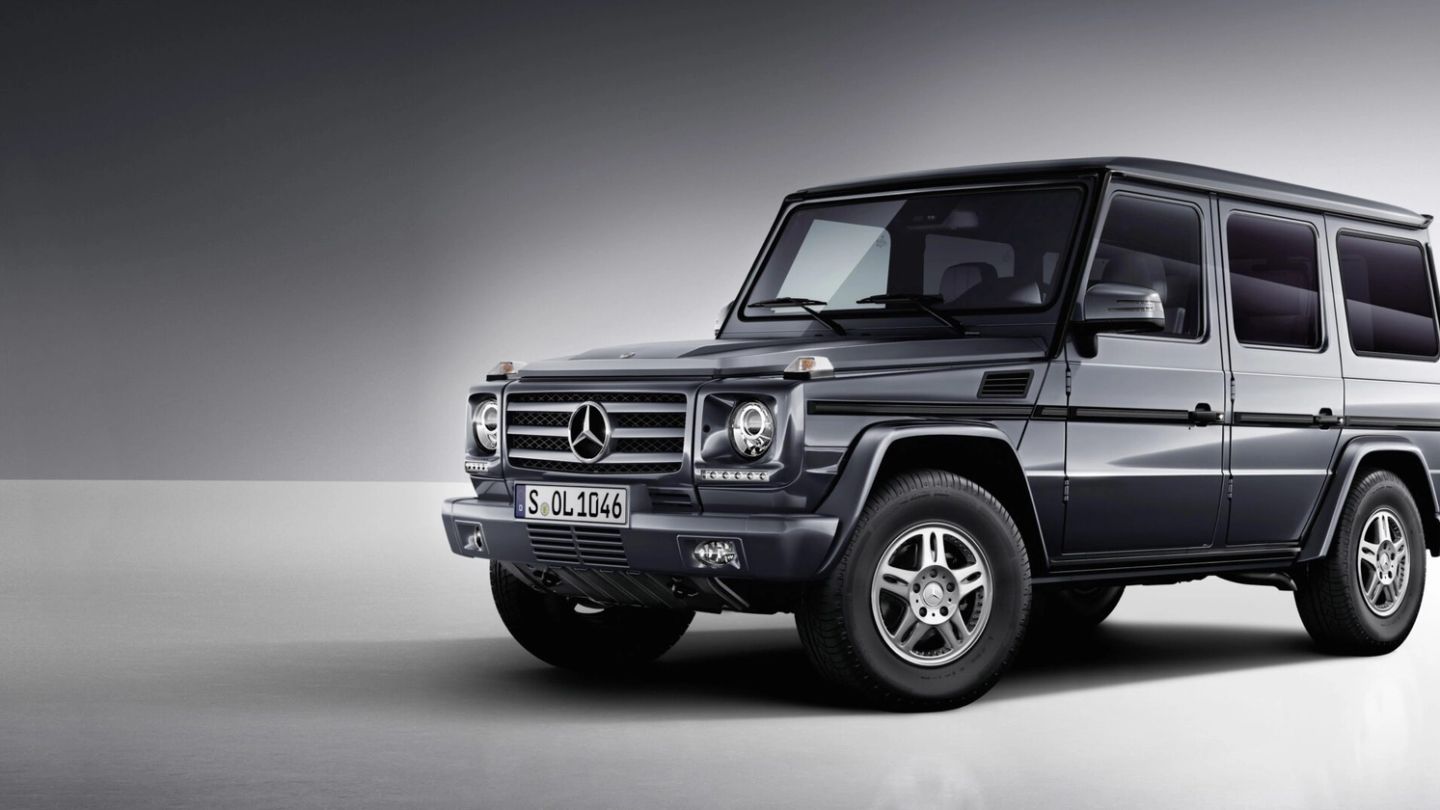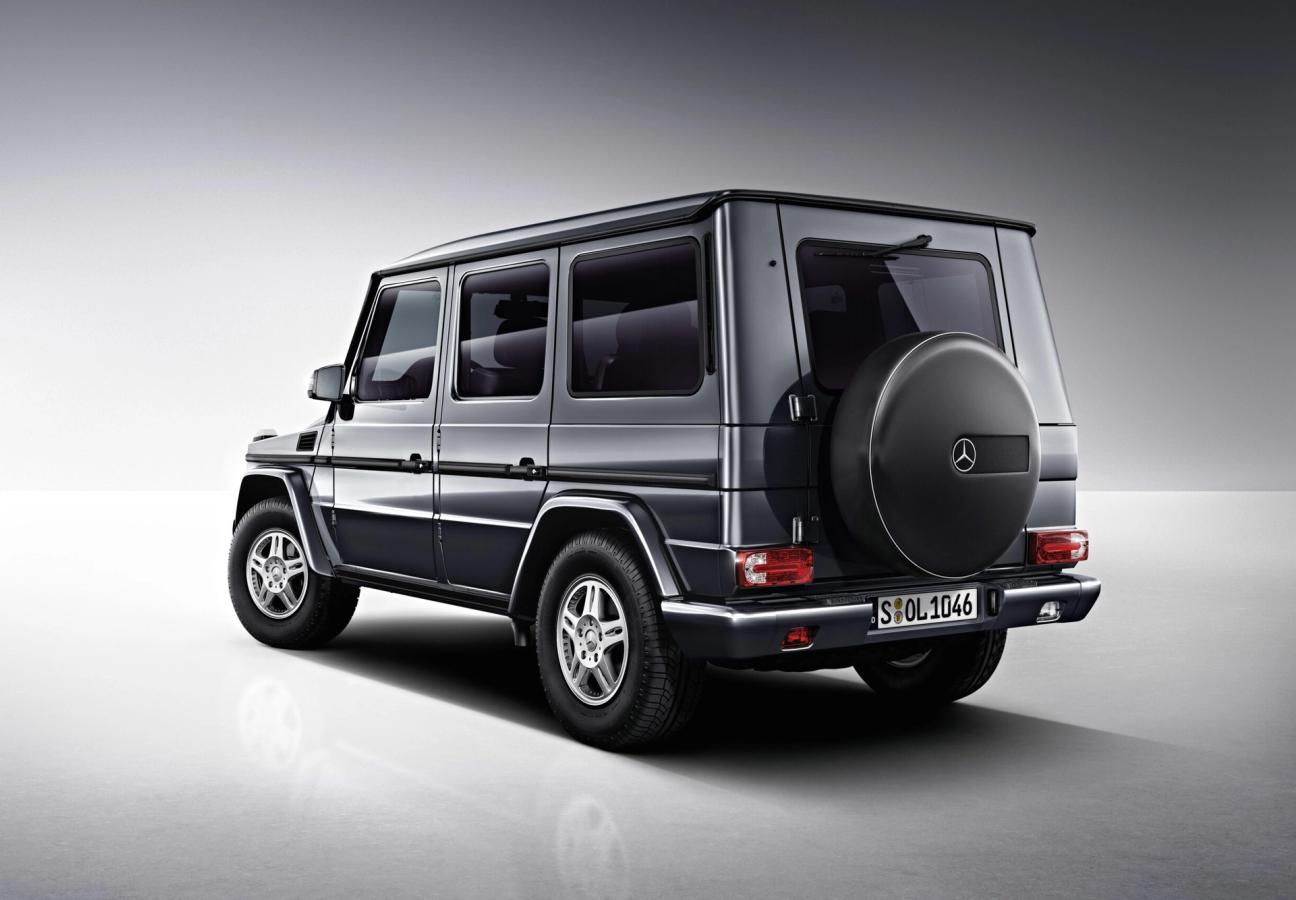

Words: Jonathan Wells
Every now and then, an unlikely icon of design comes along. Just think of Philippe Starck’s wildly impractical lemon juicer. Or Ludwig Mies van der Rohe’s famous ‘Barcelona’ chair. No arms? No thanks. Even Andy Warhol’s colourful take on a Campbell’s soup tin was just that at heart; a soup tin. And yet we hold these designs, and the weird and wonderful stories behind them, up as some of the most striking, memorable designs of our times. Add to that list then, the Mercedes-Benz G-Class, or G-Wagen.
On paper, it doesn’t add up. Imagine someone unwrapping the famous label off Warhol’s soup tin, flattening out the metal and bending it into a harsh, edgy, rectilinear shape. Don’t bother painting it, add some even edgier corners and then shove something ridiculously overpowered, like a V8 diesel, or a twin-turbo V12 under the bonnet. Throw a spare wheel on the back, a big grille on the front and some more of those sharp edges for good measure. Sound good? Of course it doesn’t. But boy is it.
There isn’t a motoring enthusiast alive who would turn down the chance to have a go in a G-Wagen. And, despite all the German wizardry going on beneath the bonnet, it’s not excitement over the engineering. No, rather it’s because of the way it looks. The G-Wagen, which would look as at home on an expedition deep in the jungle as it would parked up outside Harvey Nichols, should have been the ugly duckling of the SUV world. But it’s not. Far from it, in fact. And we intend to find out why…
It is a car drawn using severe, parallel lines
Back in the 1970s, the Shah of Iran was a major Mercedes shareholder. He suggested that Mercedes, German bastions of automotive luxury, create a functional 4×4. And, as he held the purse strings, the carmaker politely obliged. Designers in Stuttgart soon set to work creating the car, modelling it using wood instead of the typical clay. Why, you ask? Because wood would do. Even in these early stages, Mercedes decided that there would be no sweeping curves or swooping lines on the body of its inimitable G-Wagen.
And so, the car was carved. Harsh, functional lines typify Mercedes’ most angular car and, although it presented something different to shareholders, it was snapped up across the board. Initially, the G-Class was created for military purposes but, by the end of the decade, a civilian version was rolling off the production lines.
But those rolling wheels are about the only curves on the iconic Geländewagen, or ‘terrain vehicle’. To this day, it is a car characterised by clear, clean lines and large flat surfaces. It looks unswerving and powerful — presumably why the Shah of Iran was so keen on it. Unfortunately, the Shah’s order was never filled; he was deposed before the car could reach him. But, while he may not have achieved world domination, the car soon would.

The G-Wagen is a vehicle that underlines its own sense of purpose and off-road capabilities many times over. Line stacked on line, view it from the side and you’ll see that the side skirts, beltline and roof edge are aligned in parallel. It looks strong — and it is strong. So strong, in fact, that a year after the first commercially available G-Wagens hit the autobahns, an order came in from his eminence, the Pope.
In the years that followed, the car underwent slight changes. An automatic transmission was added on some models, air conditioning gave the car a luxury edge, fuel injection and central locking were introduced. The car’s interior has changed beyond recognition during its four decades of production. But the basic exterior shape, the silhouette of the G-Wagen, remains largely unchanged. Side-on, cars don’t get more iconic — let alone cars that have crossed the German coalfields, the Sahara Desert and the Arctic Circle.
Keeping a straight face
By the 1990s, the car had transitioned fully into the luxury market. Inside, burl wood trim, leather seats, cruise control and anti-lock brakes were making this tough off-roader easier to drive, with running boards even installed so clambering into the thing didn’t feel like its own expedition. For some, this diluted the hard, dominant spirit of the G-Wagen. But there was little to complain about from the outside; the exterior design remained virtually identical.
The face, as carmakers call it, has been another of the icon’s lasting design features. G-Wagens around the world feature the distinctive three-louvre radiator grille — the brand’s signature three-pointed star sitting pretty in the middle. The steeply raked A-pillars and upright windscreen also identify this most recognisable of Mercedes — no-nonsense design features proudly exhibiting function over fashion.
And there are few cars more functional than the G-Wagen. Despite modern preconceptions (and their own hefty price tags) confining them to air-conditioned garages or safe city streets, these cars drive to survive. Most models boast round headlamps and oval fog lights integrated into the bumpers as part of the iconic face, but there are some G-Wagens — even early models — fitted with protective headlamp grilles and cable winches.

A rear that takes things back to basics
The US market recognised both the G-Wagen’s luxury and its functionality come the turn of the millennium. By 2001, it had stormed across the Atlantic — muscling out the GL-Class that tried, unsuccessfully, to usurp and replace the classic. And, in 2007, the US Army ordered a passel of G-Wagens to take part in the Middle Eastern war. Just appreciate that the next time you pass one kerbside in Knightsbridge.
But it makes sense. The boxiness of the G-Wagen makes this an intimidating, if still beautiful, vehicle. From the rear, the car has a solid stance, regardless of the various wheelbases or models it has been tweaked to. There’s a broad track, distinctive wheel arch lining and lamps integrated into the straight-line rear bumpers. Even the boot space was designed with function in mind; with access to the load compartment coming via a practical hinged rear door.
But the most iconic design feature of this very iconic car is surely that spare wheel, displayed prominently and proudly on the outside of the car. It’s a badge of honour, worn by the car to prove — and boast about — some very rugged, rough and ready credentials.
And yes, we know that recent years have seen a spike in limited editions and exclusive runs of G-Wagens. No-one could forget the ludicrous G63 AMG 6-wheeler, or the Maybach-made G650 Landaulet convertible. But it’s telling that, even when the whole line was overhauled in 2018 — allegedly only the door handles and wheel cover were carried over from the original — it still looks virtually identical to how it did 41 years ago.
But that’s what design icons do. This may be a car of incredible ability and military-grade hardiness, but the most impressive terrain it has trundled through is time. The G-Wagen has survived economic downturns, design development and even huge advancements in engineering. And yet we’re still as excited about it today as we were four decades ago. That’s what we call timeless.
Want more cars? Here are the motors we can’t wait to drive in 2020…
Join the Gentleman’s Journal Clubhouse here.


